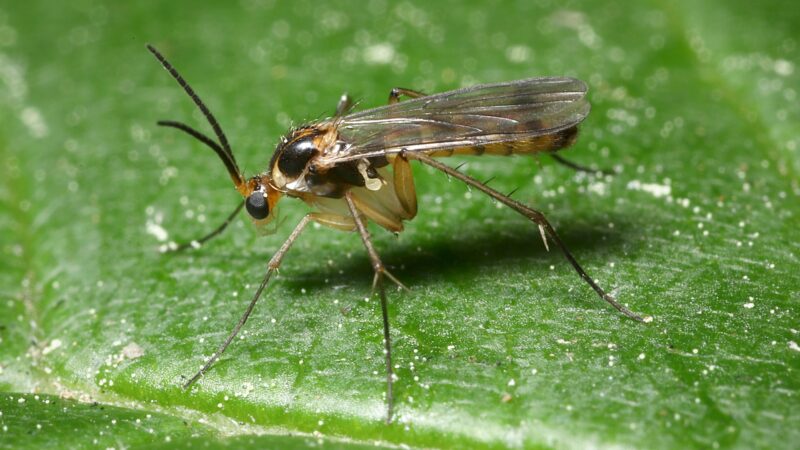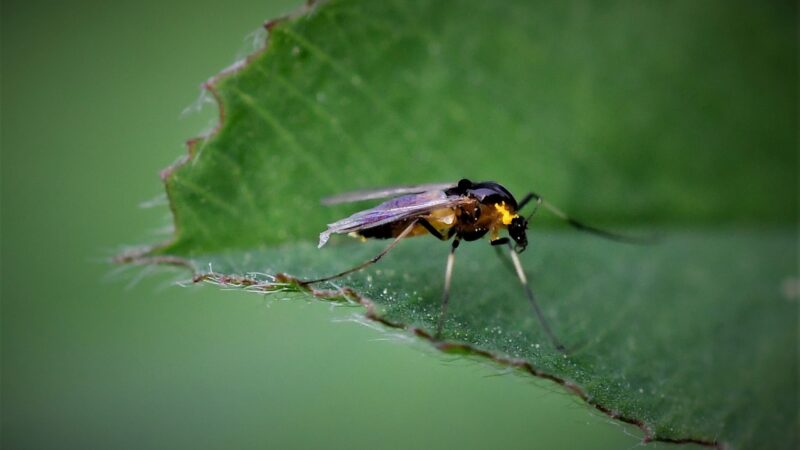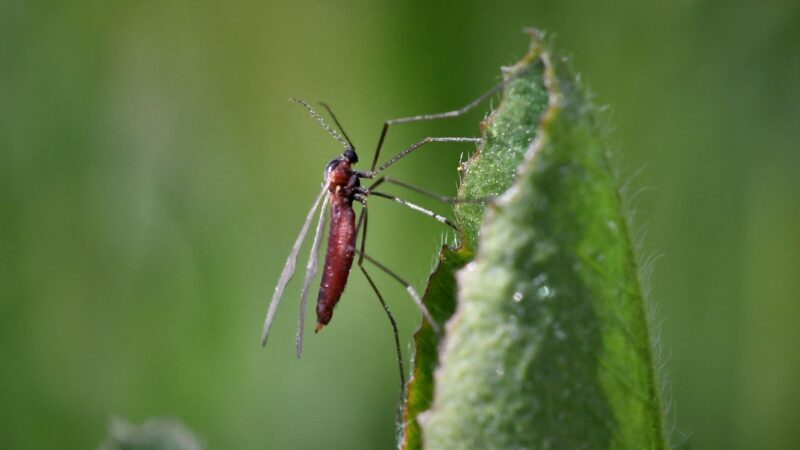Gnats are small, pesky insects that can invade your home. They’re attracted by moisture, decomposing organic matter, and overripe fruits, among other factors. Keep reading to learn more about these nuisances and how to control them.
Gnats can be a frustrating presence in your home, but by understanding their biology and behavior, you can take effective measures to eliminate them. In this article, we’ll cover gnat identification, the reasons they invade your home, and tips for getting rid of them. Let’s dive in!
Table of Contents
Gnat Identification

| Attribute | Description |
| Scientific Name | Varied depending on the gnat species |
| Appearance | Small, delicate, fly-like insects |
| Color | Generally black, brown, or gray |
| Shape | Oval-shaped body with long, slender legs |
| Lifespan | Usually 2-4 weeks |
| Habitat | Damp, moist environments |
| Length | 1-5 mm |
| Weight | Negligible |
| Diet | Fungi, algae, and decaying organic matter |
| Place of Origin | Found worldwide |
| Characteristics | Weak fliers, often seen swarming or hovering |
What Causes Gnats to Be In Your House?
Gnats are attracted to your home for various reasons. Understanding these factors can help you prevent and control a gnat infestation:
- Moisture: Gnats thrive in damp, moist environments. Overwatered plants, leaking pipes, or standing water can attract them.
- Decomposing organic matter: Gnats feed on decaying organic materials, such as rotting fruits, vegetables, or plant debris.
- Overripe fruits: Fruit flies, a type of gnat, are particularly attracted to overripe or fermenting fruits.
- Dirty drains: Organic matter buildup in kitchen and bathroom drains can provide a breeding ground for gnats.
- Poor sanitation: Gnats can be attracted to unclean surfaces or areas with leftover food particles and crumbs.
How Do You Get Rid of Gnats inside the House?

- Eliminate their breeding grounds: Clean up any decaying organic matter, fix leaks, and ensure proper drainage to remove potential gnat habitats.
- Keep your home clean: Maintain a clean and sanitary environment by regularly wiping surfaces, sweeping floors, and cleaning drains.
- Store food properly: Keep fruits, vegetables, and other perishable foods covered or refrigerated to discourage gnats.
- Use traps: Set up homemade or store-bought gnat traps to catch adult gnats and reduce their population.
- Control moisture: Use a dehumidifier or improve ventilation to reduce humidity and make your home less attractive to gnats.
What Is the Best Gnat Killer?
Various products and methods can help eliminate gnats. Some popular options include:
- Apple cider vinegar traps: Mix equal parts apple cider vinegar and water in a small container, add a drop of dish soap, and leave the container uncovered near gnat-infested areas. The vinegar attracts the gnats, and the soap breaks the surface tension, causing them to drown.
- Sticky traps: Hang sticky traps near windows or other areas where gnats congregate to capture them.
- Insecticides: Use indoor-safe insecticides or sprays specifically designed to target gnats, following the manufacturer’s instructions. Always exercise caution when using chemical treatments, especially around children and pets.
- Essential oils: Some essential oils, like eucalyptus, peppermint, or tea tree oil, can help repel gnats. Mix a few drops with water in a spray bottle and apply to affected areas.
What Is the Best Gnat Killer?

The best gnat killer is a combination of prevention, traps, and natural repellents. Chemical insecticides should be used as a last resort, as they can harm beneficial insects and the environment.
Frequently Questions
Why Am I Getting So Many Gnats in My House?
Gnat infestations often result from a combination of factors, such as moisture, decaying organic matter, and poor sanitation. Addressing these issues can help reduce the number of gnats in your home.
What Is the Fastest Way to Get Rid of Gnats?
Quickly eliminate breeding grounds, clean your home thoroughly, set up traps, and use insecticides or essential oils as needed.
What Are Gnats Attracted To?
Gnats are attracted to moisture, decaying organic matter, overripe fruits, and dirty drains.
Do Gnats Carry Disease?
Some gnats, like fungus gnats, are harmless, while others, like black flies, can transmit diseases.
Can Gnats Bite You?
Some gnats, like black flies and biting midges, can bite and cause itchy, red welts. However, not all gnats bite, and many are simply a nuisance without posing a direct threat to your health.
Where Do Gnats Go at Night?
Gnats are generally less active at night but can still be found near their breeding grounds or resting on walls, ceilings, or other surfaces.
Why Do I Have Gnats in My Kitchen Sink?
Gnats are attracted to the organic matter and moisture that can accumulate in kitchen sinks and drains. Regularly cleaning your sink and drain can help prevent gnat infestations.
Do Gnats Turn Into Flies?
Gnats are a type of small fly, and they don’t turn into larger flies. However, they do go through a life cycle that includes egg, larva, pupa, and adult stages.
How Long Do Gnats Live In Your House?
Gnats typically have a lifespan of 2-4 weeks. However, if their breeding grounds are not eliminated, a new generation of gnats can emerge and prolong the infestation.
Where Do Gnats Lay Eggs in a House?
Gnats lay their eggs in damp, moist environments, such as the soil of overwatered plants, near leaking pipes, or in organic matter buildup in drains.
List of Sources
Bethke,J. A., Dreistadt, S. H. (2013). Fungus Gnats. Agriculture and Natural Resources, University of California.
Cransaw, W. S., Cloyd, R. A. (2009). Fungus Gnats as Houseplant and Indoor Pests. Colorado State University Extension.
Waldvogel, M., Alder, P., Crawley, S. (2021). Fungus Gnats Indoors. N.C. Cooperative Extension.